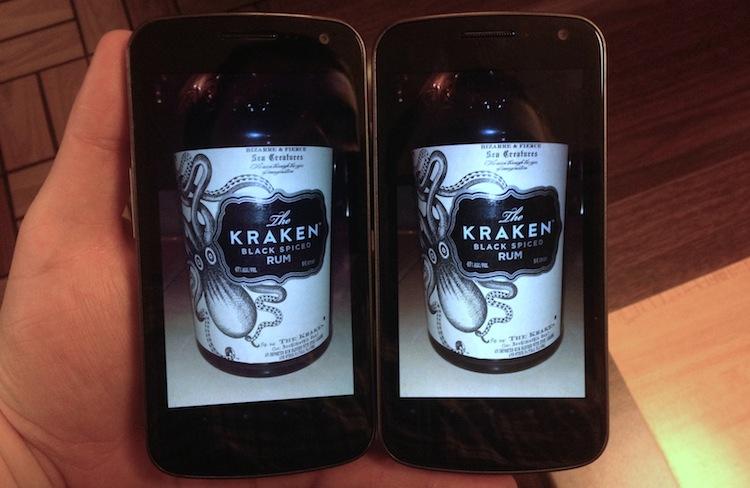
When Google and Samsung took to the stage in Hong Kong to announce the Galaxy Nexus and latest Android update, Ice Cream Sandwich, they had quite a few new features to show off. Some, like Face Unlock, were undoubtedly gimmicky. Others, on the other hand, were both cool and very useful, like the built-in Panoramic mode within the native camera app, an improved notification system and the native screenshot function.
But during the press event, there was one feature that really stuck out to me and threatened to change the way we share media and data between our phones ... forever: Android Beam. When I finally got my hands on the Galaxy Nexus, the first thing I wanted to do was to test out Beam, to see how well it worked, what some of its limitations were and whether it was even worth fooling with.
Unfortunately, coming across someone else with a Galaxy Nexus or a NFC-capable phone with a custom Ice Cream Sandwich ROM is rare, especially in my neck of the woods. Needless to say, I had a Galaxy Nexus, ready to Beam with someone else, but nobody I knew had a Nexus. Being in the midst of 150,000 or more super nerds in Las Vegas, where Galaxy Nexii were apparently abundant, you would think that I would have taken the time to mess with Beam while I was at CES.
I didn't.
In fact, I didn't mess with Beam at all until earlier this week, when I ran into my cousin at Waffle House. Excited to finally have the time and hardware to test Beam out, I snatched up his phone and started beaming away – sharing Maps, contacts, applications and all kinds of tiny little bits back and forth between the phones. Immediately, though, I learned that Android Beam has some issues.
For one, the transfer isn't always easy to initiate. While the transfer should be as simple as holding the two phones near each other (very nearly touching), you would think it would be effortless. However, I found myself having to constantly pull the two devices away from one another, reposition and try again. And sometimes it would not let me "touch to beam" – I could tap the screen over and over and nothing would happen. Usually, it would work after just a couple tries. Point being, it rarely worked on the first try.
What's more is how limited it is in terms of sharing. By nature, NFC is limited in what it can do. It can only communicate with another NFC device within a range of roughly 10 centimeters (even less in the context of Beam), and the file transfer rate is comparably slower than similar connections, such as Bluetooth. Therefore, natively, you can't share just anything. You have to stick to smaller things like Web pages, YouTube videos and contact information. Out of the box, you're not able to share larger things like pictures, videos or other files via Beam.

The good news is that all hope is not lost. Google has created a set of APIs (application programming interfaces) and made them available to developers, so that they can find new and more useful ways to use Beam and the NFC chip within Android phones. As you can see above, both phones above are displaying the same picture from within the Gallery app. This picture was taken just moments after completing a transfer that was initiated by Beam. And that's truly where NFC and Android Beam will play a major role in sharing of the future.
As I stated above, NFC has its limitations. But what it is really good at is establishing a quick, effortless connection with another device, simply by holding them very close together. This can be used to a user's advantage and can create a Bluetooth connection (same could theoretically be done with an ad hoc network) for faster transfer rates, thus enabling you to transfer photos.
To transfer pictures via Beam, you must download and install a (free) third-party application from Android Market called File Expert. Then, navigate to the photo you want to send, tap the share button and select "NFC Tapping." From there, you proceed as if it were a Beam exchange by holding two NFC-enabled phones near each other and sending the file. File Expert then creates a Bluetooth connection between the devices to speed up the transfer.
Sure, it has its quirks and sending a picture might take a few more seconds than the magic sharing method we were hoping for, but it's cool to play with and it definitely works quite well. I'm just a little disappointed that Google didn't think outside the box and include picture sharing functionality out of box.
Nonetheless, Beam is awesome and NFC is without a doubt the least painful method of sharing pictures between phones that I have come across, even if it's only being used to establish a Bluetooth connection between said phones. Among other things, Beam is something the Android development team should shift a little more focus to in future updates to set their platform apart from their competitors.
What would be truly awesome, though, is seeing NFC transfers like Beam going cross-platform. With time, it will, much like Bump or Hoccer eventually made their way to both iOS and Android. And as more Android phones gain NFC support, Ice Cream Sandwich and Beam becomes a little more ... fluid, this will quickly replace how I share photos and any other useful information with my friends.
Have any of you messed around with Beam yet? Do you find it useful, or to be a gimmick? What useful apps that support Beam have you come across? Do you wish Google had added picture sharing in Beam as a native feature via ad hoc?